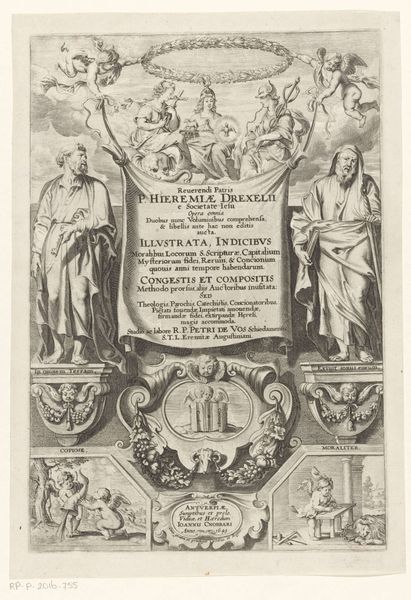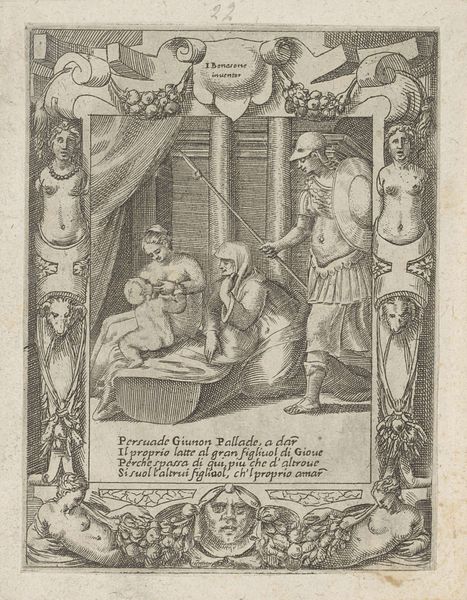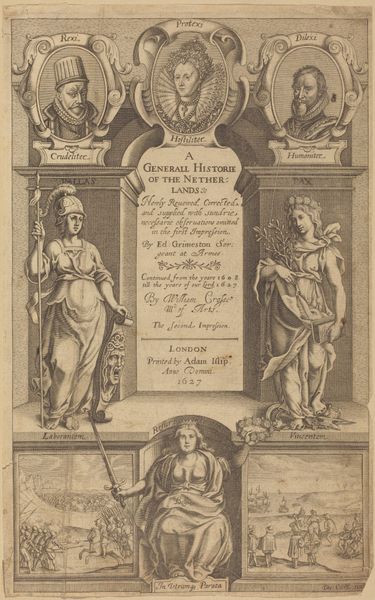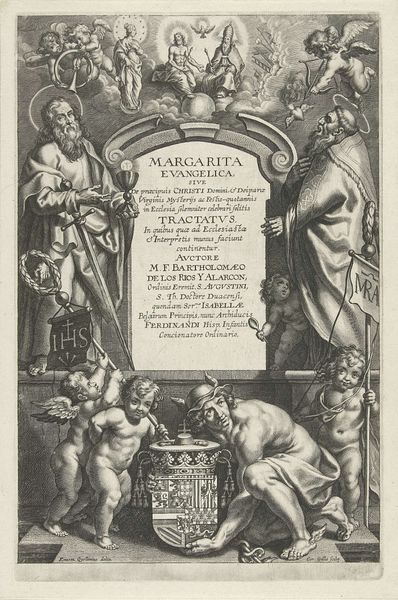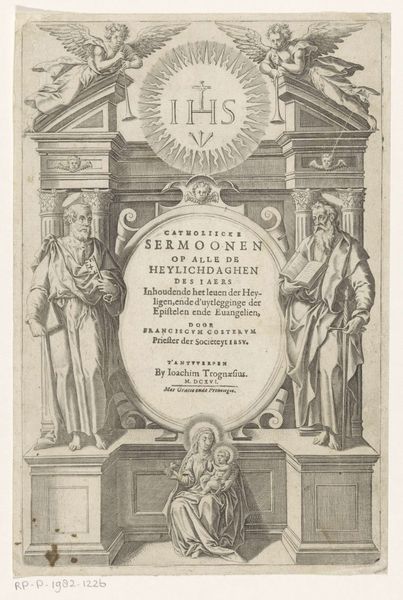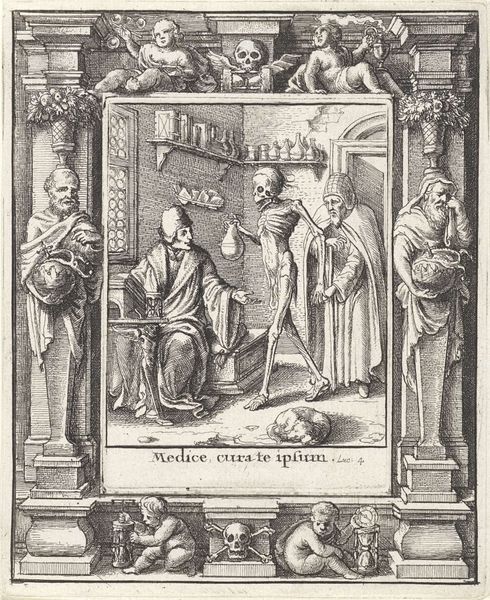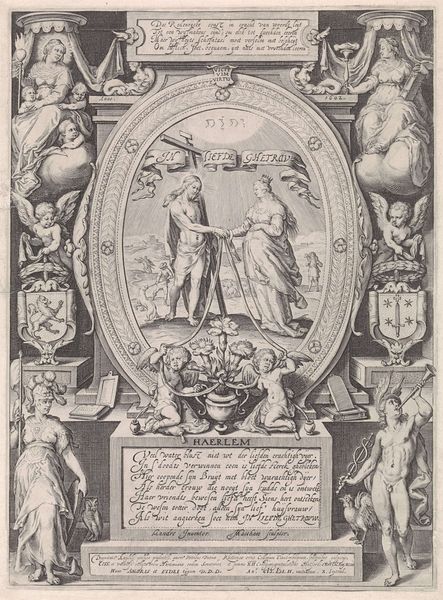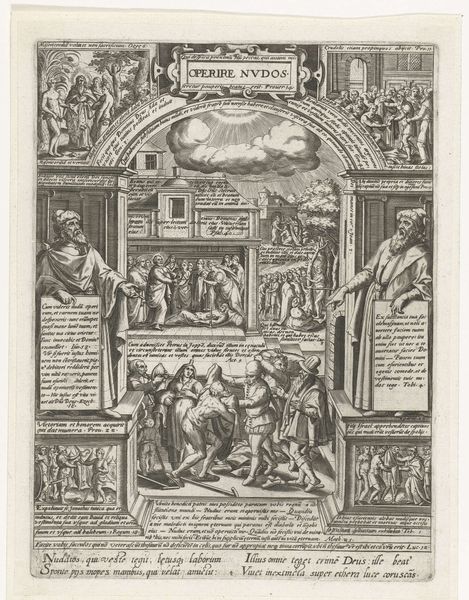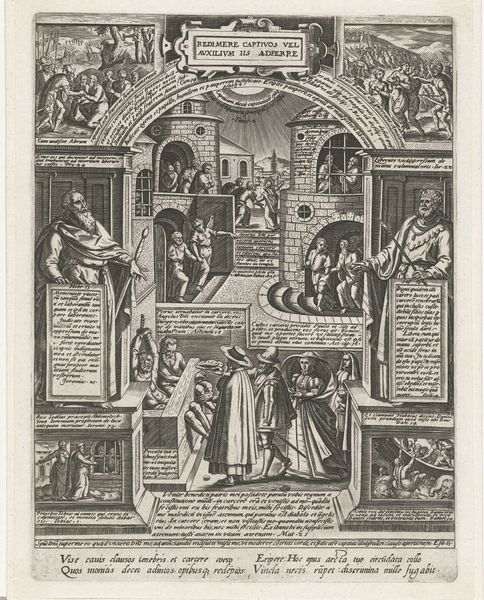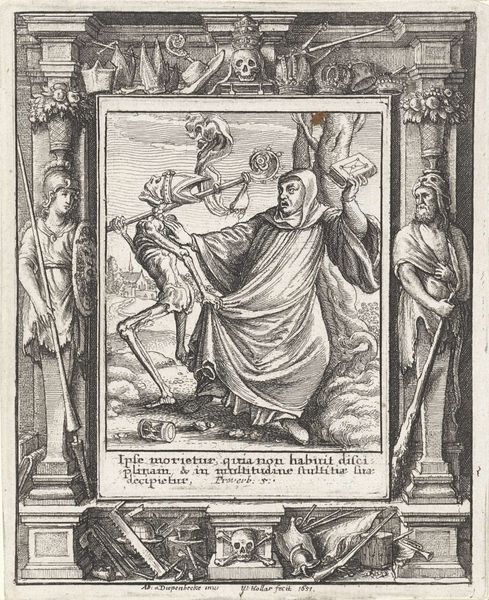
print, engraving
#
baroque
# print
#
history-painting
#
engraving
Dimensions: height 282 mm, width 178 mm
Copyright: Rijks Museum: Open Domain
Curator: This engraving, "Minerva en man in harnas," dates to 1619 and resides here at the Rijksmuseum. It depicts Minerva, the Roman goddess of wisdom and warfare, alongside an armored figure. It immediately strikes me as quite dense, the image field entirely packed. The figures feel rigid, almost monumental despite the print's small size, an imposing architectural facade dominates. Editor: Yes, it's incredibly detailed for a print. Looking closer, I wonder about the production and consumption of such an image. Given the historical context of religious and political upheaval in Europe at the time, was this engraving perhaps a way of visualizing power structures and conflicts for a wider audience? How might such accessible visual material contribute to forming and shaping public perception? Curator: Precisely. The allegorical figures of Minerva and the warrior serve a didactic purpose, providing a heroic framework to comprehend these conflicts. Observe the composition, carefully segmented. We see war up top, then text which functions to glorify these acts, next representations of Minerva on one side and our anonymous warrior on the other side standing as solemn gatekeepers. Finally prisoners on the lower register complete a traditional layout that creates narrative. The scenes of war, Minerva as allegory of a ‘right cause’ and prisoners all represent some symbolic order. Editor: I see what you're saying about composition and purpose. However, I'm also struck by the artisanal skills evidenced. Notice the fineness of the lines achieved in the engraving process. The level of control and craft involved in rendering these forms is itself remarkable. Do you know what types of printing tools would have been available to create the depth within such a flat medium? Curator: That's a solid perspective that takes us back to understanding production processes to grasp cultural influence: consider, perhaps the use of specialized burins or other engraving tools, which might affect the artistic outcome. The fact it would then be traded and sold to decorate the houses of common folk says everything! Editor: True, it shows how visual rhetoric was linked directly with everyday experiences—where commerce became its own narrative and message delivery service across various social echelons and geographies Curator: Indeed. It allows for discussion about what constitutes high and low art within the era Editor: What are your thoughts? It sounds as though we can all benefit when we appreciate how each tiny thread weaves history from distinct points. Curator: I concur. It prompts introspection towards various viewpoints towards understanding an historical item, especially in conjunction regarding artistry displayed against potential distribution routes or purposes for wider impact
Comments
No comments
Be the first to comment and join the conversation on the ultimate creative platform.
